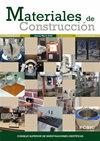高抗硫酸镁复合水泥
IF 1.5
4区 工程技术
Q3 CONSTRUCTION & BUILDING TECHNOLOGY
引用次数: 5
摘要
研究了化学活性磷渣基复合水泥(CAPSCC)的抗硫酸镁性能。用磷渣(80 wt.%)、II型硅酸盐水泥(14 wt.%)和复合化学活化剂(6 wt.%)配制足够的砂浆试样,固化后暴露于5%硫酸镁溶液中。制备II型和V型硅酸盐水泥(PC2和PC5)砂浆试件进行对比。试验结果表明,暴露12个月后,PC2、PC5和CAPSCC的抗压强度分别降低43.5%、35.2和25.2%,长度膨胀率分别为0.136、0.110和0.026%,重量变化率分别为0.91、2.2和1.78%。x射线衍射和扫描电镜的补充研究表明,CAPSCC形成硫酸盐侵蚀产物的潜力非常低,尤其是钙矾石。结果证实,与PC2和PC5相比,CAPSCC具有较高的耐硫酸镁性能。本文章由计算机程序翻译,如有差异,请以英文原文为准。
A composite cement of high magnesium sulphate resistance
This study investigates the magnesium sulphate resistance of chemically activated phosphorus slag-based composite cement (CAPSCC). Enough mortar specimens were prepared from phosphorus slag (80 wt.%), type II Portland cement (14 wt.%), and compound chemical activator (6 wt.%) and were exposed to 5% magnesium sulphate solution after being cured. Mortar specimens of both type II and V Portland cements (PC2 and PC5) were also prepared and used for comparison purpose. According to the test results, after 12 months of exposure, PC2, PC5 and CAPSCC exhibited 43.5, 35.2 and 25.2% reduction in compressive strength, 0.136, 0.110, and 0.026% expansion in length, and 0.91, 2.2, and 1.78% change in weight, respectively. Complementary studies by X-ray diffractometry and scanning electron microscopy revealed that CAPSCC has a very low potential for the formation of sulphate attack products, especially ettringite. The results confirm a high magnesium sulphate resistance for CAPSCC compared to PC2 and PC5.
求助全文
通过发布文献求助,成功后即可免费获取论文全文。
去求助
来源期刊

Materiales de Construccion
工程技术-材料科学:综合
CiteScore
3.20
自引率
9.50%
发文量
38
审稿时长
>12 weeks
期刊介绍:
Materiales de Construcción is a quarterly, scientific Journal published in English, intended for researchers, plant technicians and other professionals engaged in the area of Construction, Materials Science and Technology. Scientific articles focus mainly on:
- Physics and chemistry of the formation of cement and other binders.
- Cement and concrete. Components (aggregate, admixtures, additions and similar). Behaviour and properties.
- Durability and corrosion of other construction materials.
- Restoration and conservation of the materials in heritage monuments.
- Weathering and the deterioration of construction materials.
- Use of industrial waste and by-products in construction.
- Manufacture and properties of other construction materials, such as: gypsum/plaster, lime%2
 求助内容:
求助内容: 应助结果提醒方式:
应助结果提醒方式:


